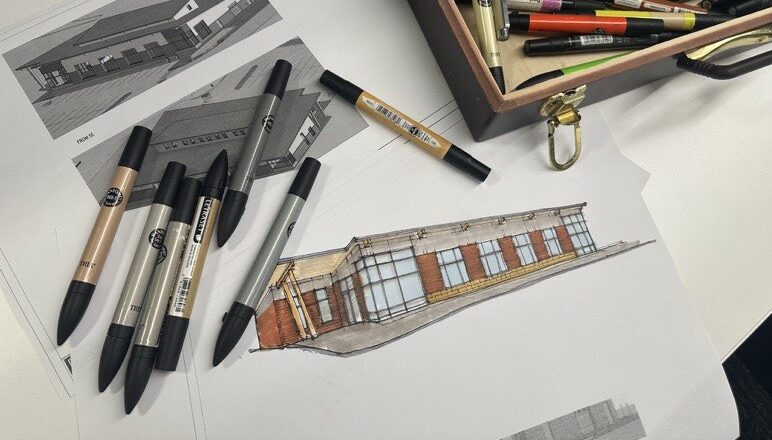Small firms are being unfairly shut out of the federal home-building program

The federal government has made some bold moves to try and solve the housing crisis, including opening public land and surplus federal buildings to off-market housing development. This is good, and just the sort of leadership we need. At heart, getting homes built is a procurement issue and that’s where leadership falls apart.
Procurement is the process by which the government issues a Request for Proposal (RFP) asking firms to show how they can meet objectives. After scoring their technical merits, bidders’ fees are assessed and a total score is developed, with the top firm winning the job. In theory this works but is fraught with challenges.
A key part of formal RFP responses is the time and cost: it can take $20-40,000 of staff time to respond to an RFP. Barriers can often include absurdly high thresholds for experience or insurance that have little or no bearing on the actual needs of the project.
Often, the top technical scores are similar: the bidders with the highest technical score will have the experience, skill and knowledge to deliver it. In the end, if all bidders are roughly equally qualified, the fee is the differentiator.
Fundamentally, the fee is determined by pricing out the work in its narrowest definition to do only what the RFP asks for, nothing more, nothing less. Do the least work, for the least effort, to meet the minimum requirements of the contract. Creative ideas that can generate better value, but are outside the narrow definitions of the RFP, rarely see the light of day.
Instead, we could use design competitions, like the recent one for Block 2, a new precinct for the federal government. This successful outcome was supported by Public Services and Procurement Canada (PSPC) and by industry and was hailed as a positive move for creative design. Final presentations included public discussion, media coverage and engagement.
Smaller competitions can be simpler. Edmonton hosted a design competition for Missing Middle Housing, attracting dozens of creative responses. They can be even simpler, creating a short list of invited bidders based on creativity, innovation, relatable or transferable skills and social procurement goals.
When we choose a rigid procurement system, the public loses out on good value because of an overly bureaucratic process. Such is the case with a June RFP to convert surplus federal office buildings into housing across the country.
Across hundreds of pages, PSPC (Public Services and Procurement Canada) describes what they are looking for. Their threshold for minimum acceptable experience was having done at least 15 similar feasibility studies, in the last five years, that meet specific criteria set by PSPC for their reporting goals. Bidders are also asked to submit copies of 5 of their recent feasibility studies doing this exact work.
If your firm has converted office buildings into housing, that doesn’t count. If your firm has done conversions to something other than residential, it won’t be accepted.
It’s not clear how many feasibility studies have been done for this sort of work in Canada in the last five years, if ever. Private sector developers may use an informal approach to those studies, as part of their design process but his is not what PSPC is looking for.
In September, four firms won contracts for this work. Three of them are large multi-national corporate firms. That undermines the ability to build technical skills within small/medium businesses, which would benefit Canada’s competitiveness and help Canada fulfil its objectives. This is especially important in architecture, where the vast majority of firms have fewer than 50 employees (the 2023 average was 18).
There are thousands of firms across the country wanting to contribute to their communities. They have creative ideas to adapt underused federal buildings into housing and could approach this sort of study from the perspective of inclusive design. A more open procurement process could bring marginalized voices (such as women- or Indigenous-owned firms) to the table to address core societal needs.
PSPC could have structured this process differently. Instead of four firms covering the whole country, groups of smaller firms could have been short-listed by region. For each federal asset, three to five firms could be offered a modest fee to produce a high-level feasibility study and concept. These could be properly juried quickly and easily. The top firm selected could develop their idea, fine tuning aspects of a final report that addresses key PSPC goals, such as Greenhouse Gas reductions, heritage value and other factors. Each competition entry could include some form of public presentation and engagement, connecting design ideas with the public, building consensus and excitement for design possibilities.
The need to build housing and making better use of federal assets is essential. But we should do that by opening the door to creative ideas from across the country instead of falling back on the same few corporate giants.
PSPC offered a contract to firms who managed to somehow demonstrate their experience in a field in which little or no similar work has been done. Hundreds of firms across the country are shut out of their communities, their ideas will never be seen or heard.
We need to reform our approach to procurement to be fair, transparent and open to the creative ideas we need to make our communities thriving, vibrant, places for people.
By Toon Dreessen
Originally published in The Globe and Mail.